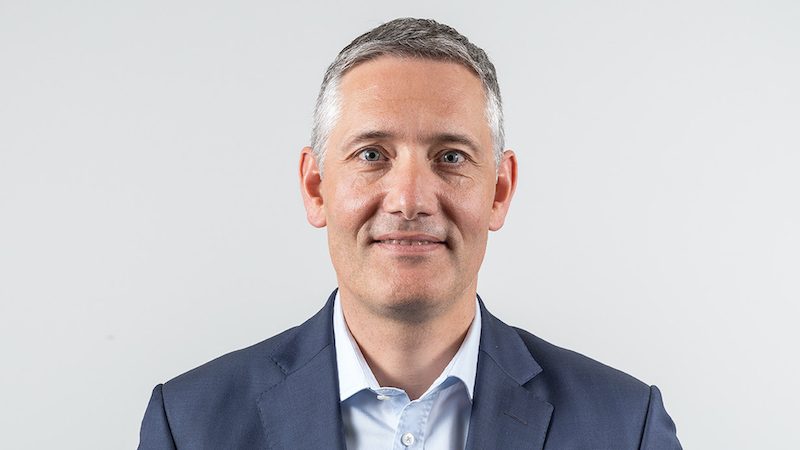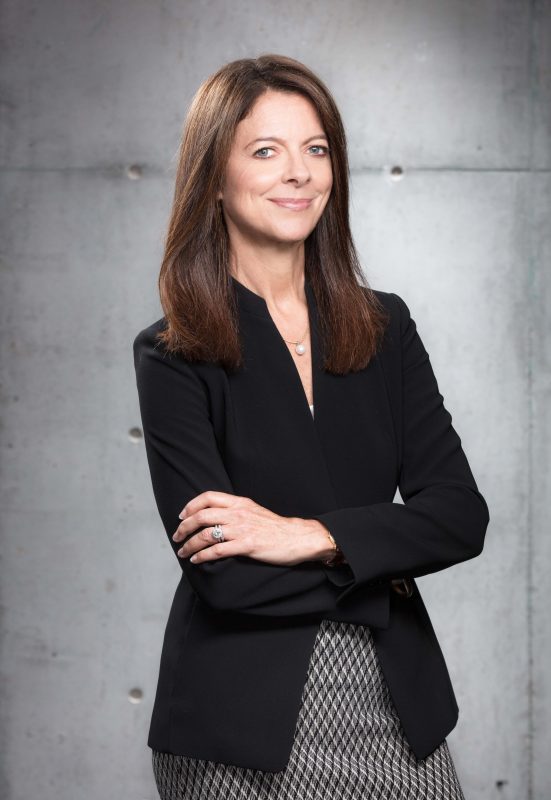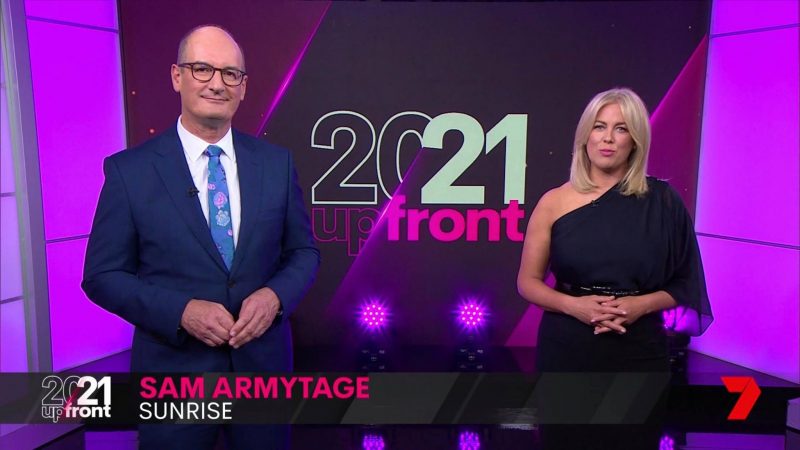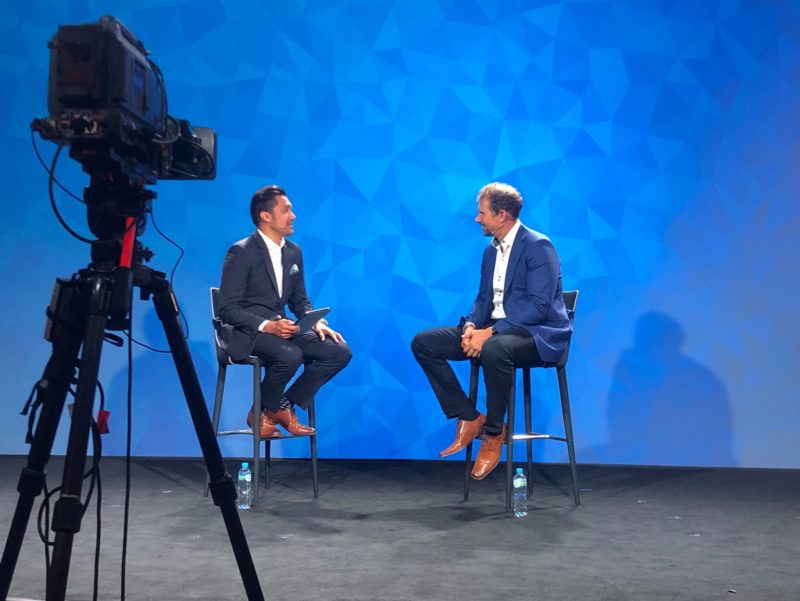Financial recap: The highs, lows, losses and gains of 2020
As we put the year that was 2020 behind us and look towards 2021 with hope and anticipation, the Mumbrella team recaps how some of the most powerful media and advertising companies in Australia fared financially in the past 12 months: the highs, the lows, the gains and the losses.
Here, There & Everywhere
Here, There & Everywhere (HT&E) weathered the coronavirus pandemic relatively well and came out the end of 2020 in good shape on the ASX.
Starting the year with a share price of $1.67, the media company whose divisions include broadcast radio and out of home advertising saw its value dip to $1.05 in March and $1.01 in June as the full impact of the pandemic hit advertiser dollars. As of 5 January 2021, HT&E’s share price had recovered to $1.82.
HT&E began 2020 by reporting full-year revenue of $252.7 million for the previous year, down 7% on 2018’s full-year revenue.
In April, the company acquired 11 million shares in Ooh Media, a move that Ooh Media called “opportunistic” as its share price tumbled and which brought HT&E’s interest in the outdoor advertising company to 4.2%.
Around the same time HT&E’s share price jumped to $1.34, but the impact of the pandemic wasn’t over and in June it was one of several media and marketing companies including Seven West Media, and WPP AUNZ to fall off the ASX 300 list.
HT&E would go on to report an 82% fall in net profit for the second half of the FY20 financial year, and share value fluctuated over the following months until September began to show signs of an upturning trend.
Its radio network, ARN, saw ad revenue return slowly over the back end of the year and content director Duncan Campbell told Mumbrella in December that the network is seeing “a return to pre-COVID levels sooner than expected.
Isentia
Isentia has had a tough past 12 months on the ASX, having fallen from a share price of $0.30 as of 3 January 2020 to be trading at $0.12 a share on 4 January this year.
The company completed several key hires in late 2019 and early 2020, including the promotion of Patricia Kavanagh as head of sales in Australia in January. This came shortly after announcing Russ Horrel in the position of chief commercial officer at the back end of the year prior.
In the early months of 2020, Isentia’s share price fell steeply to $0.12 a share in March. At that time, CEO Ed Harrison told Mumbrella that reducing labor costs and relying on artificial intelligence would help the business to get its balance sheet back on track.

Isentia’s Ed Harrison
Isentia had improved to $0.25 a share in late August, but then came a trading halt in late October after a cybersecurity incident which impacted its Mediaportal service.
By the time trading had recommenced, Isentia shares had fallen from $0.19 to $0.13 when trading re-commenced.
It would then fall as low as $0.11 in early December, following a November apology in which Isentia confirmed that between $7 million and $8.5 million would be wiped from its net profit in the 2021 financial year.
News Corp (Australia)
The Murdoch-led News Corp was not spared from the shocks of COVID-19 throughout 2020 despite its long-term resilience. The dual-listed corporation saw its ASX share price fall from A$23.40 in January 2020 to almost half ($14.59) in the first four months of the year. It has now picked back up to where it started at $23.40 as of 5 January.
For the full year, News Corp reported a $US1.3 billion (A$1.8 billion) loss overall. The conglomerate’s news media division, which houses the Australian media properties such as The Australian, The Daily Telegraph, Herald Sun and Courier Mail saw revenue fall 18% in FY2019-20 to $US2.8 billion.
In Australia, more than 100 of News Corp’s regional and community titles were moved to digital-only formats during the reporting period. In addition, 14 titles now cease to exist altogether. Accompanying this was significant job cuts across the board.
The annual report noted that the closures in Australia of many print titles and the focus on digital going forward was evidence of the company’s willingness to be “decisive at an epochal moment”. It added that the “format is less important than the function, and we firmly believe that the digital reincarnation of these titles will ensure a profitable future and a continuing role in their communities”.
As majority shareholder in Foxtel, News Corp saw some silver linings in 2020; broadcast rights deals for sports were redrawn as COVID-19 hit the schedules. The reduced costs are set to save Foxtel at least $180 million over the next three years, as compared to the prior contracted values.
News Corp Australia also implemented a range of centralised services for its news outlets in the second half of 2020. The new Australian Business Network headed by The Australian’s business editor will share print and digital content across News Corp’s other broadsheet and metropolitan newspapers, including The Daily Telegraph, The Courier-Mail, Herald Sun, and The Advertiser. Existing metropolitan business reporters will be merged with the new national team. According to the company, the Shared Services program will transform the company by centralising many of its functions and that early indications are that the program should be able to “appreciably reduce” costs and have a “materially positive impact” on its bottom line.
Nine Entertainment Co
Nine was a media industry anomaly in 2020 – it added muscle throughout the year while many others eroded. At the start of 2020, its share price sat at $1.81. Today, shares are trading at $2.33, an almost 30% uplift.
The share price bottomed out early in the COVID-19 outbreak, dropping to $0.84 at the end of March. But then it started a gradual but sure-footed climb to its current price – the best since mid-2018, when the Fairfax Media merger was announced.
The former Fairfax papers performed strongly last year, as did the radio assets rebranded to Nine Radio at the very start of 2020 to bed in the Macquarie Media acquisition. Alan Jones’ retirement was offset by the seamless introduction of Ben Fordham on 2GB, who continued to dominate in the Sydney breakfast market. And in Melbourne, Russel Howcroft’s addition to 3AW Breakfast brought with it survey results better than his bosses could have ever hoped for.
Nine also dominated TV land. It won the ratings year for the second year in a row – both in total audience and the key advertising demographics. The likes of Married at First Sight, Lego Masters, The Block, State of Origin, and pre-Covid the Australian Open all brought big audiences to the network, and Nine hopes the 2021 additions of Beauty and the Geek and Celebrity Apprentice Australia will continue the momentum established in 2019 and 2020.
Its streaming product, Stan, continued to prove it’s the biggest and most threatening local competitor to Netflix when it announced Stan Sport, starting with a $100 million rugby deal, which was quickly followed by the addition of the rights for two of the four tennis Grand Slams, including Wimbledon.
But its incredibly strong commercial performance wasn’t the main focus as Nine closed out the year.
Instead, headlines magnetised to its CEO, Hugh Marks. On a Saturday afternoon in November, Marks unexpectedly announced his resignation from the top job after five years, following the disclosure that he had begun a relationship with former Nine executive Alexi Baker while she worked with him.

Hugh Marks, CEO of Nine resigned in November.
The story drew attention away from that week’s Stan Sports announcements, and the annual general meeting, at which Marks revealed operating earnings would experience 30% growth in the first half of FY20-21.
Marks is still in the chief executive role as the search for his replacement continues.
Ooh Media
The out of home media industry in Australia was significantly impacted by the COVID-19 related economic conditions, and Ooh Media’s financial results certainly show that.
The ASX-listed provider has seen its share price tumble from just below $4.00 to $1.62 in the past 12 months. It hit a low of $0.59 in late March as the lockdowns across the country came into force.
At this time Ooh Media announced a number of initiatives to improve the company’s financial flexibility and liquidity. These initiatives included the launch of a $167 million fully-underwritten equity raising, with proceeds to be applied to repay debt and fund transaction costs.
The company also introduced cost control measures to create savings of $20 million – $30 million in operating expenditure and fixed rent expense reductions.
By the end of the third quarter, as restrictions were increasingly eased across the country, audience volumes were tracking at 87% of their 2019 levels. Up from a low of approximately 50% in mid-April 2020 compared to the prior corresponding period. During this period Standard Media Index reported that total Australian advertising market spend improved from a decline of 44% in May to a 5% decline in October versus the previous corresponding year.
Overall, Ooh Media’s Q3 revenues were approximately 43% behind the previous period in aggregate and continued to improve in Q4.
It reported revenues of $649.6 million for the 2019 Financial Year. The 2020 results are expected to be between $420 million and $430 million. The full results will be released on 22 February.

Cathy O’Connor has officially started her role as CEO at Ooh Media.
Ooh Media has launched into 2021 with a new CEO and managing director. Cathy O’Connor replaced founding CEO and managing director Brendon Cook, who stepped down on 31 December. Cook announced at the beginning of 2020 that he intended to step down, however he will remain at the business until the end of 2021 to continue to advise and assist the company’s management.
Prime Media Group
Prime Media Group did well to recover its trading position over the back end of 2020, and was trading at $0.20 as of 4 January 2021. That’s higher than its $0.18 position as of 6 January 2020.
2020 began on uncertain terms for Prime after Antony Catalano and Bruce Gordon blocked a planned merger between Seven West Media and Prime in December of 2019.
Prime then copped the brunt of falling ad spend towards media companies, seeing its share price fall as the coronavirus pandemic hit advertisers.
In May, Prime’s management took a 20% reduction in base salary, as advertising in regional markets slowed “dramatically” due to coronavirus lockdowns.
Prime applied for the Job Keeper program during this period, after the month of April saw a 38.1% decline in revenue alone.
After falling to $0.09 in May, and then again in September, Prime then clawd back to a high of $0.21 in late December.
Seven West Media
2020 was action-packed for a debt-laden Seven, which opened the year with a share price of $0.33.
Almost a year ago, Mumbrella’s editor-at-large, Tim Burrowes, wasn’t shy when he penned an opinion piece titled: ‘Just how much trouble is Seven in? (Answer: A lot more than you probably realise)’. It was the same headline he’d written three years earlier about Ten, a few short months before it went into voluntary administration.
COVID-19 was just gaining momentum when the piece was published. A day earlier, Seven’s CEO James Warburton said he was giving “absolutely no thought” to the prospect that the virus could delay or cancel the Olympics. As we now know, it did. At the end of May, when the inevitable was finally confirmed by the International Olympics Committee, Seven West Media’s share price sat between $0.08 and $0.09, almost a 2020 low (it bottomed out at $0.06 in April).
In Warburton’s first full year in the role, the pandemic not only impacted live sports on Seven, including AFL and cricket, but also postponed the biggest sporting event of all. ‘Tokyo 2020’ had reportedly secured almost A$100 million in advertising revenue for Seven, and the network promised it would reach 21 million Australians – or more than 80% of the population – with the broadcast, thanks to the Tokyo time zone.
But with the Olympics now set to occur this July (it also signed a new broadcast deal for the Beijing 2022 Winter Games), the year-long breathing room may have been exactly what Seven needed, given it was forced to implement 20% pay cuts and make redundancies in response to COVID-19. Once $170 million worth of cost savings are rolled out, the business will have its lowest headcount in 18 years.
And, of course, there’s the looming debt, $450 million of which is due in July 2022 and an additional $300 million later that year. $450 million was set to mature this year, but Seven renegotiated its banking facility in July 2020, buying itself some time but also incurring increased costs and fees.
It has attempted to reduce that debt pile by offloading a number of assets. In 2020, it sold its Western Australian newspaper headquarters for $75 million, Seven Studios UK, and reportedly made steps to sell the local Seven Studios unit.
And, of course, it secured the $40 million sale of Pacific Magazines to Bauer (now called Are Media after Bauer exited Australia and sold to Mercury Capital), even taking legal action to ensure Bauer honoured the contract and paid the price it committed to pre-COVID-19.
Seven also achieved $87 million in savings when it renegotiated its AFL deal. As for the cricket, the feud between the TV company and Cricket Australia has continued to escalate, as Seven threatened to walk away from the sport, and sent a letter to Cricket Australia flagging its intention to back away from the $82 million a year deal, worth $450 million over the four years it has remaining. And in December, the media company commenced Federal Court action, centred on concerns about the Big Bash League and the summer schedule. So far this year, the BBL has not delivered strong ratings for Seven.
But the battle won’t be in vain if it leads to savings.
Interestingly, Seven is beginning 2021 the same way it began 2020 from a share price perspective: at $0.33. The price has risen slowly but steadily since October, when the network presented its 2021 upfronts.

Sunrise hosts David Koch and Samantha Armytage appeared during the 2021 upfront
The upfronts have become an opportunity for Warburton to be confessional. In 2019, he admitted Seven was “weak, inward focused, tired and stagnant” with “a string of poor programs and failures”. And towards the end of last year, he said that “COVID didn’t single us out, but it sure as hell affected us more than our competitors”.
2021 will be better, he promised agency partners: “No more excuses from us … don’t bet against us.”
Southern Cross Austereo
Southern Cross Austereo (SCA) ended 2020 in a relative position of strength on the ASX despite facing several tough challenges across the year, largely stemming from the coronavirus pandemic.
As of 5 January, the radio network is trading at $2.30 a share, up from just $0.60 at the same time last year.
SCA began the year off the back of cost-cutting measures which saw it make approximately 90 redundancies in the final month of 2019.
Then came an expansion of radio assets, with SCA buying up Redwave Media’s Western Australian radio stations, and then Carnavon Communications. When the coronavirus pandemic hit Australia in March, the Hit and Triple M Network parent company announced a trading halt and then voluntary trading suspension, as it announced to the ASX that it was assessing the impacts of COVID-19 on its business. By the end of March, SCA’s trading value had fallen to just $0.12 a share, and its employees were receiving Job Keeper.
The company then began raising $169 million in fully underwritten funding to stay afloat during the pandemic, before making the major decision to axe 19 breakfast shows in regional Australian markets in August. The decision came at the same time SCA reported an 18% fall in revenue on the year prior.
A new content leadership structure was to follow, before SCA confirmed it was eligible for the government’s Job Keeper extension.
As ad bookings improved over the final months of 2020 with all metro markets out of lockdown except Melbourne, SCA’s share price recovered significantly, reaching $1.53 in early November and a high of $2.65 before ending the year at $2.30.
WPP AUNZ
WPP AUNZ has entered 2021 with its highest share price since October 2018 at $0.70.
The current status is likely the result of the recent takeover bid by its UK and US counterpart, WPP plc, which was announced to the market on 30 November 2020, initially offering a price of A$ 0.55 per share in cash for the 38.5% of shares in the company not already owned, before upping the offer to $0.70 per share two weeks later.
At the time of the takeover bid, WPP AUNZ’s share price sat at $0.41, it then jumped to $0.55 by close of trade that day, and has only continued to increase as the deal is negotiated.
Following the 25 December release of a Scheme Implementation Deed, the takeover bid will proceed with a vote by minority shareholders in late April 2021. If it is successful, WPP AUNZ will be removed from the ASX.
WPP AUNZ began 2020 with a $0.55 share price, but plummeted in the month of March from a Q1 high of $0.62 to $0.19 on 7 April due to COVID-19 in Australia and subsequent lockdowns across the country.
On 31 March WPP AUNZ implemented cost cutting measures as a result of rapid reductions in marketing spend. The measures kicked-off with a voluntary reduction in base salaries for board directors, the CEO and senior leadership team, as well as a voluntary program of nine-day fortnights and four-day weeks for other staff.
By 9 April the request to take voluntary pay cuts and hours reductions was extended to all WPP AUNZ staff, amounting to a $70 million cost-saving measure. A spokesperson told Mumbrella at the time: “To continue to protect our people, preserve future jobs, and manage the health of our business, it has also asked most of its Australian-based employees to consider voluntary salary reductions and work arrangement adjustments.
On 21 August, WPP AUNZ revealed all staff had returned to full pay and capacity. As well as the announcement of the takeover bid, 30 November also saw the business promote its return of salary sacrifices to those earning under $200,000. The returns were only given to staff that continued to work full time but on a reduced salary, which Mumbrella understands was only a small minority of staff across the business. Staff who took a 10% or 20% reduction in hours, and respective pay cut, did not have their sacrifices returned.

Monsees speaking recently at Mumbrella360: Reconnected
WPP AUNZ’s mid-year results announced on 20 August 2020, recorded a 68.5% drop in headline profit before tax and a 61.5% decline in headline earnings before interest and tax (EBIT). A period of growth began in late September, at the same time CEO Jens Monsees and then-COO John Steedman were allocated further share rights and options as a result of the business’ Long Term Incentive Plan. The share price reached $0.43 by 12 October, the same date Steedman announced his retirement, and wavered until the takeover bid was announced.

